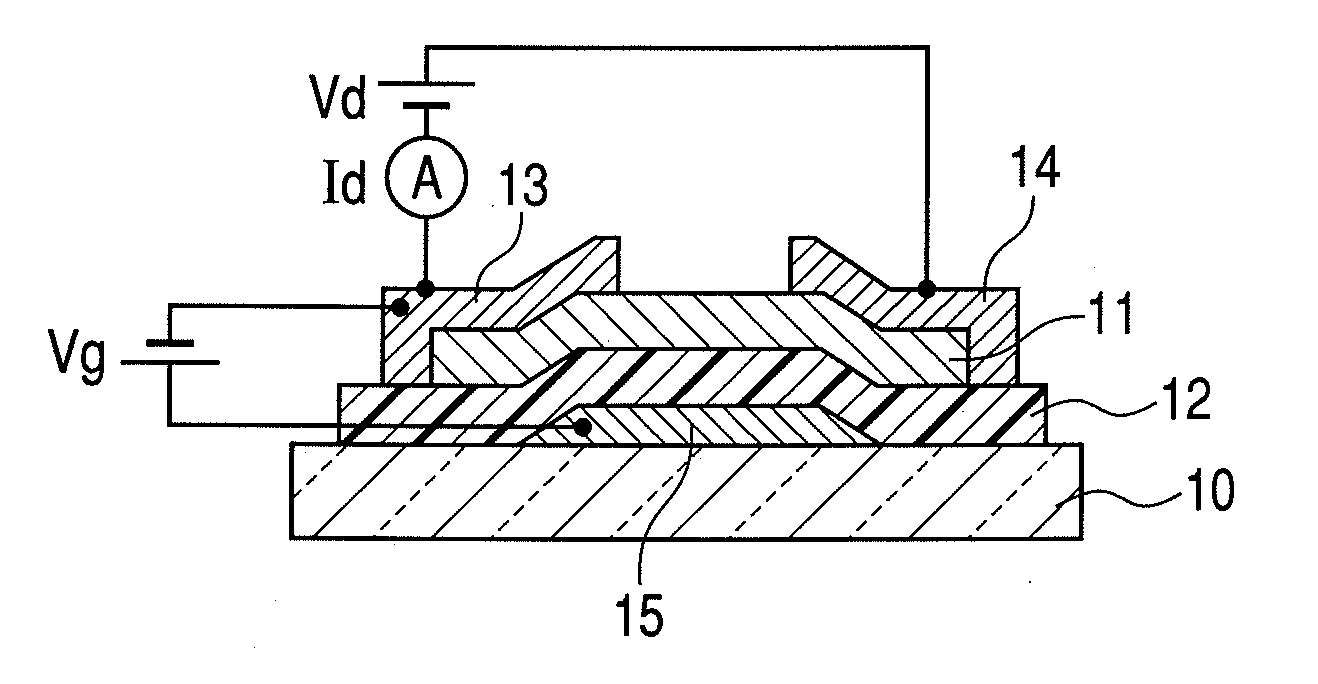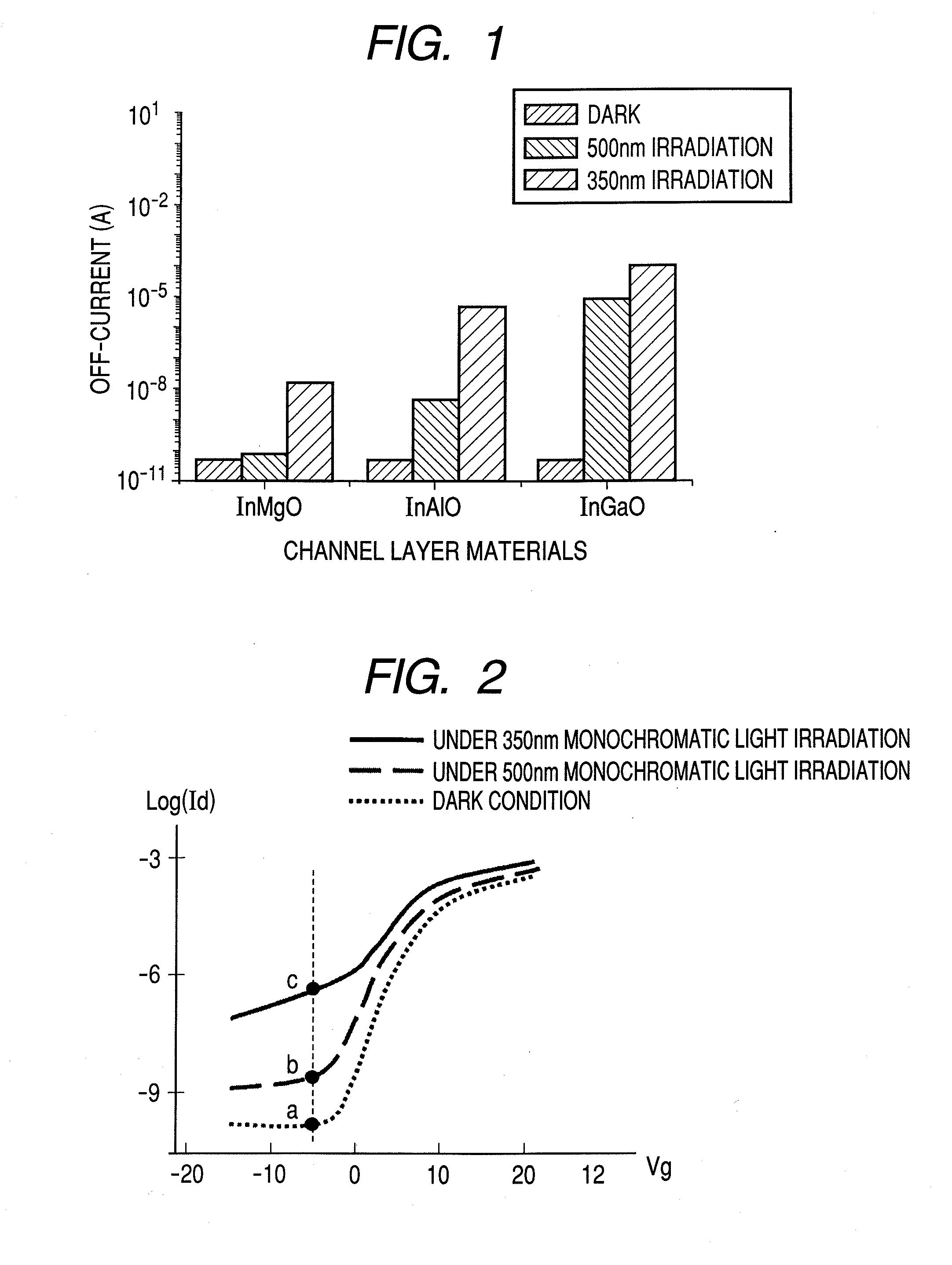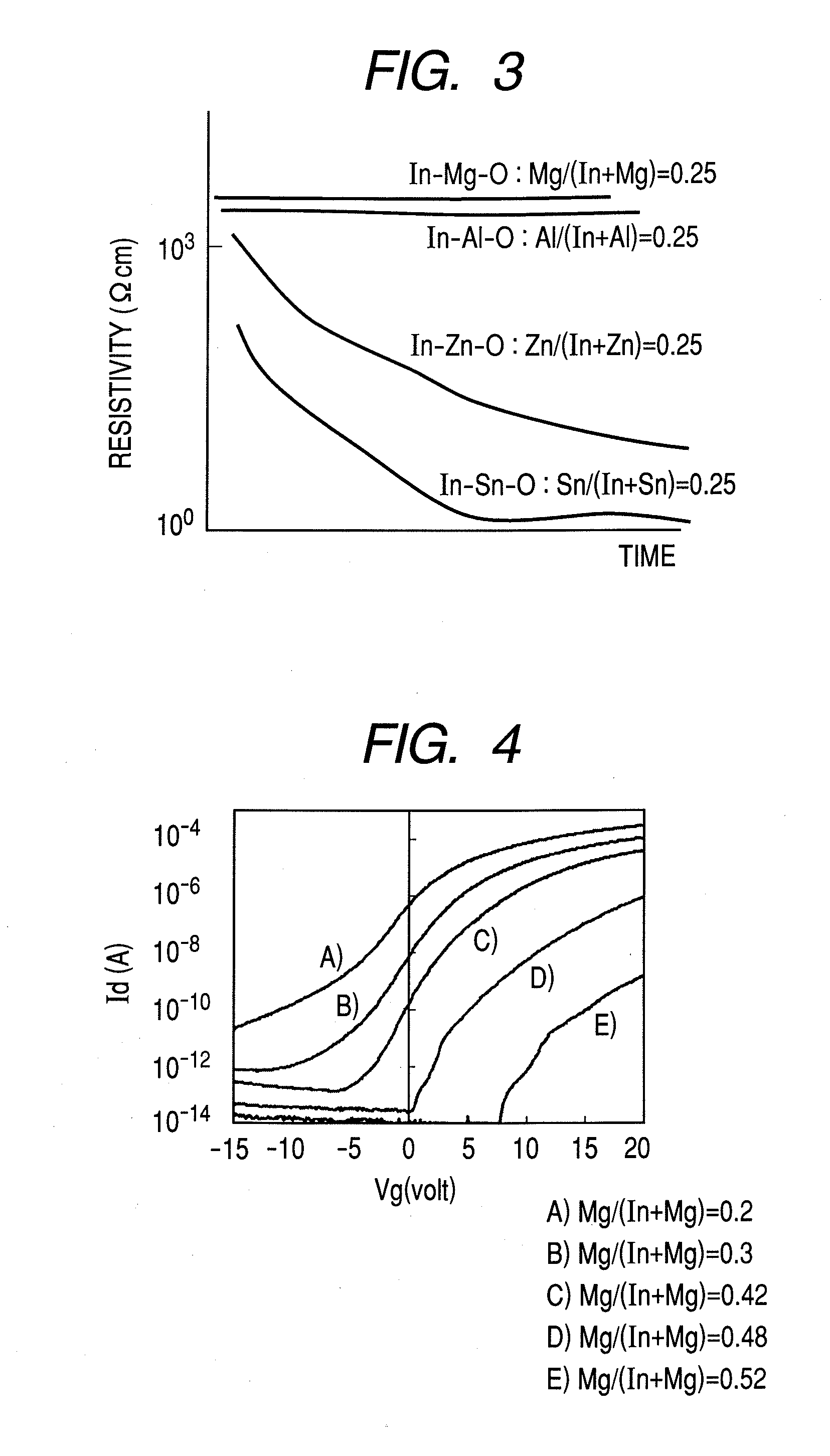Field effect transistor
- Summary
- Abstract
- Description
- Claims
- Application Information
AI Technical Summary
Benefits of technology
Problems solved by technology
Method used
Image
Examples
example 1
[0084]In this example, the top-gate TFT device illustrated in FIG. 8A was manufactured with an In—Mg—O-based amorphous oxide as a channel layer.
[0085]First, an In—Mg—O-based amorphous oxide film was formed as the channel layer on a glass substrate (1737 manufactured by Corning Incorporated). The film was formed by high-frequency sputtering in a mixed atmosphere of argon gas and oxygen gas with the use of an apparatus illustrated in FIG. 10. In FIG. 10, a sample, a target, a vacuum pump, a vacuum gauge, and a substrate holder are denoted by reference numerals 51, 52, 53, 54, and 55, respectively. A gas flow rate controller 56 is provided for each gas introduction system. A pressure controller and a film formation chamber are denoted by reference numerals 57 and 58, respectively. The vacuum pump 53 is an exhaust unit for exhausting the interior of the film formation chamber 58. The substrate holder 55 is a unit for keeping the substrate on which the oxide film is to be formed within t...
example 2
[0104]In this example, the In—Mg composition dependency was examined in a thin film transistor with a channel layer that contains In and Mg as major components.
[0105]This example employed the combinatorial method for TFT fabrication (channel layer formation) in order to examine the material composition dependency of the channel layer. In other words, TFT compositional library was made with the use of a method of forming, by sputtering, thin films of oxides varied in composition on a single substrate. However, it does not need to be this combinatorial method, and targets of a given composition may be prepared to form a film, or thin films of desired compositions may be formed by controlling the input power for multiple targets separately.
[0106]An In—Mg—O film was formed with the use of a ternary grazing incidence sputtering apparatus. With the target positioned at an angle with respect to the substrate, the composition of a film on the substrate surface is varied due to a difference ...
example 3
[0122]In this example, a channel layer was formed from an In—Al—O-based amorphous oxide, and the top-gate TFT device illustrated in FIG. 8A that used this channel layer was manufactured and evaluated by the same method that was employed in Example 1.
[0123]2-inch sized targets of In2O3 and Al2O3 (purity: 99.9%) were used to form an In—Al—O film by simultaneous sputtering. The input RF power was 60 W and 180 W for the former and latter targets. The atmosphere in the film formation was set such that the total pressure was 0.4 Pa and the gas flow rate ratio was Ar:O2=150:1. The film formation rate and the substrate temperature were set to 11 nm / min. and 25° C., respectively. Subsequently, the film was subjected to an annealing process for 30 minutes at 280° C. in atmospheric air.
[0124]A glance angle X-ray diffraction (thin film method, incident angle: 0.5°) was performed on the surface of the obtained film. No obvious diffraction peaks were detected, which indicated that the formed In—A...
PUM
| Property | Measurement | Unit |
|---|---|---|
| Ratio | aaaaa | aaaaa |
Abstract
Description
Claims
Application Information
 Login to View More
Login to View More - R&D
- Intellectual Property
- Life Sciences
- Materials
- Tech Scout
- Unparalleled Data Quality
- Higher Quality Content
- 60% Fewer Hallucinations
Browse by: Latest US Patents, China's latest patents, Technical Efficacy Thesaurus, Application Domain, Technology Topic, Popular Technical Reports.
© 2025 PatSnap. All rights reserved.Legal|Privacy policy|Modern Slavery Act Transparency Statement|Sitemap|About US| Contact US: help@patsnap.com



